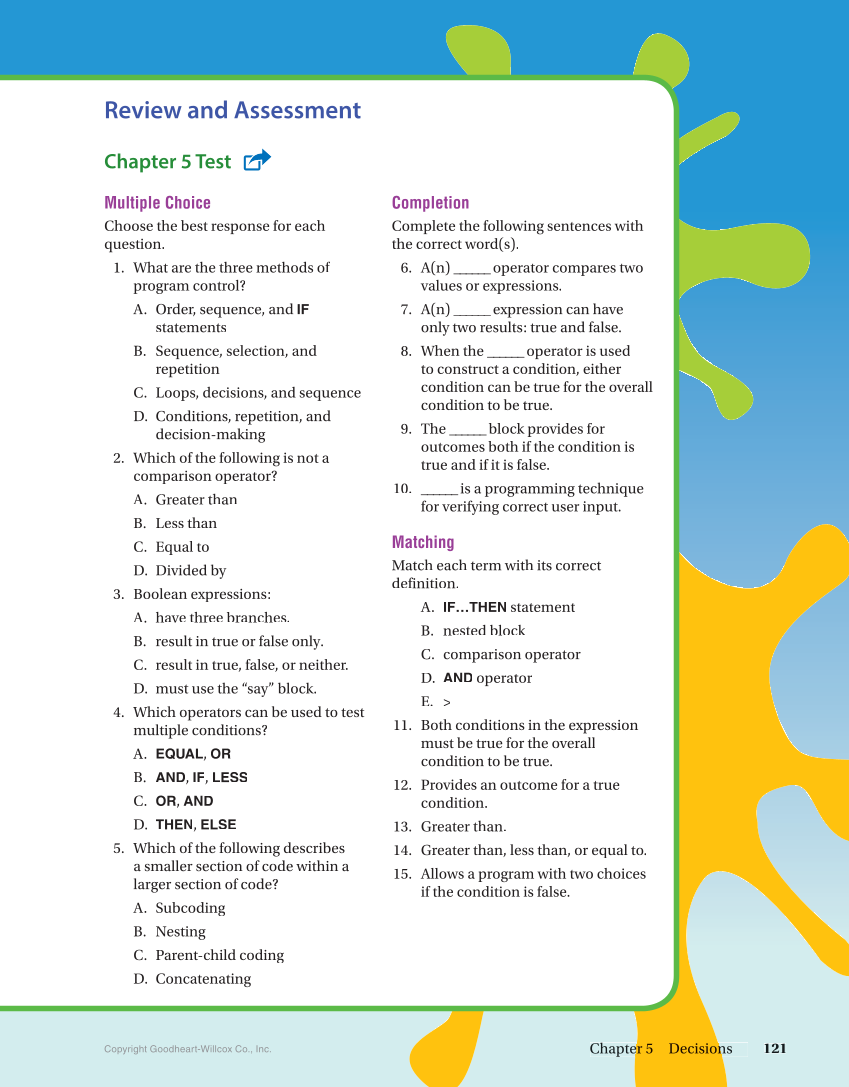Review and Assessment Chapter 5 Test Multiple Choice Choose the best response for each question. 1. What are the three methods of program control? A. Order, sequence, and IF statements B. Sequence, selection, and repetition C. Loops, decisions, and sequence D. Conditions, repetition, and decision-making 2. Which of the following is not a comparison operator? A. Greater than B. Less than C. Equal to D. Divided by 3. Boolean expressions: A. have three branches. B. result in true or false only. C. result in true, false, or neither. D. must use the “say” block. 4. Which operators can be used to test multiple conditions? A. EQUAL, OR B. AND, IF, LESS C. OR, AND D. THEN, ELSE 5. Which of the following describes a smaller section of code within a larger section of code? A. Subcoding B. Nesting C. Parent-child coding D. Concatenating Completion Complete the following sentences with the correct word(s). 6. A(n) ______ operator compares two values or expressions. 7. A(n) ______ expression can have only two results: true and false. 8. When the ______ operator is used to construct a condition, either condition can be true for the overall condition to be true. 9. The ______ block provides for outcomes both if the condition is true and if it is false. 10. ______ is a programming technique for verifying correct user input. Matching Match each term with its correct definition. A. IF…THEN statement B. nested block C. comparison operator D. AND operator E. 11. Both conditions in the expression must be true for the overall condition to be true. 12. Provides an outcome for a true condition. 13. Greater than. 14. Greater than, less than, or equal to. 15. Allows a program with two choices if the condition is false. Chapter 5 Decisions er 5 Decision 121 Copyright Goodheart-Willcox Co., Inc.
